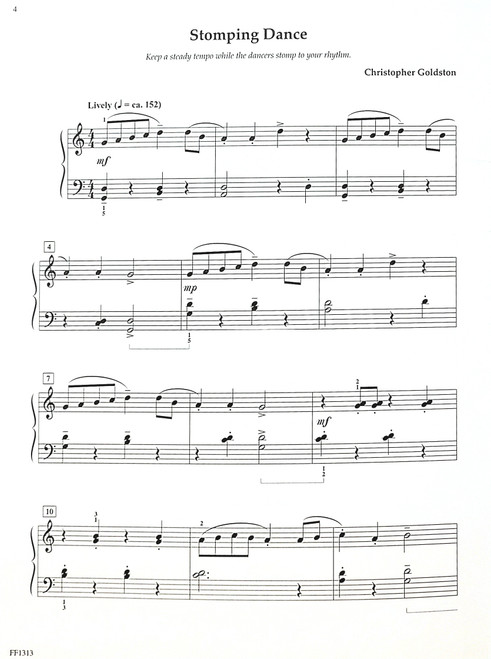This book is a continuation of the technical program begun in FINGER BUILDERS 1 that enables each student to play expressively with the desired control. A good technic must flow without hesitation if performers are to achieve the various effects of phrase markings, dynamics, and the musical patterns as notated by the composer.
Here are some points to keep in mind as you practice your technic each day:
1. Concentrate fully on what you are practicing, and don't let yourself be distracted by other things. Check yourself frequently to be sure that you are still focused.
2 Try to develop the technical control to play with a wide range of dynamics. For example, play one part soft and the next loud, or make a crescendo followed by a diminuendo. Playing one hand louder than the other is good practice for being able to bring out the melody of a piece while keeping the other parts softer. Varying the dynamics will not only improve your technic, but will also help you concentrate.
3. When practicing the staccato exercises, be sure to use very precise "down-up" wrist motions, and don't play any faster than you can get the correct wrist action for every note.
4. A slight wrist rotation will help you feel the flow of energy from finger to finger. Keep the elbows relaxed and quiet when using wrist rotation.
5. When practicing scales, look for the "group of three," and the "group of four " fingering patterns. Be careful -- sometimes the scale will start in the middle of the fingering pattern. Use dynamic changes in your scale practice to get better control of dynamics in your pieces.
You are developing the "feel" of a good technic that results from the combination of nicely curved fingers, a supple wrist, and energy that literally flows from finger to finger as you play the notes.




































